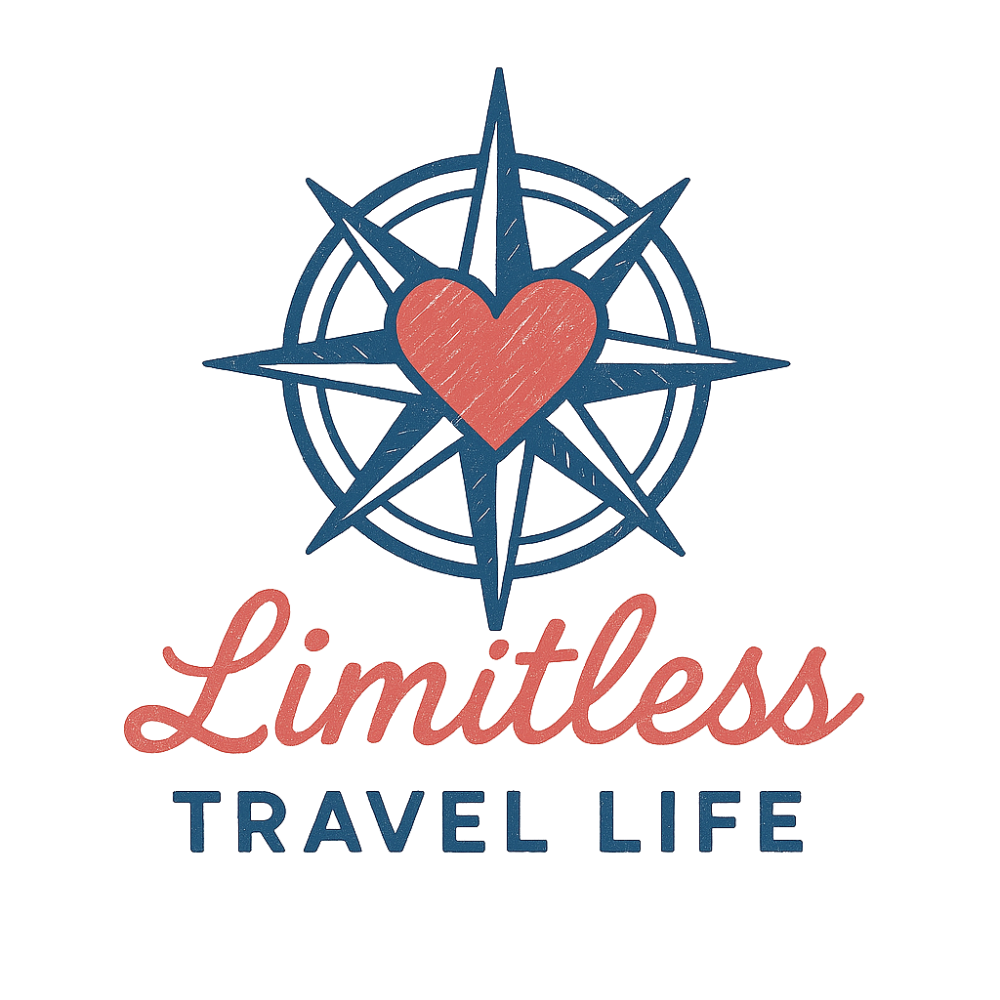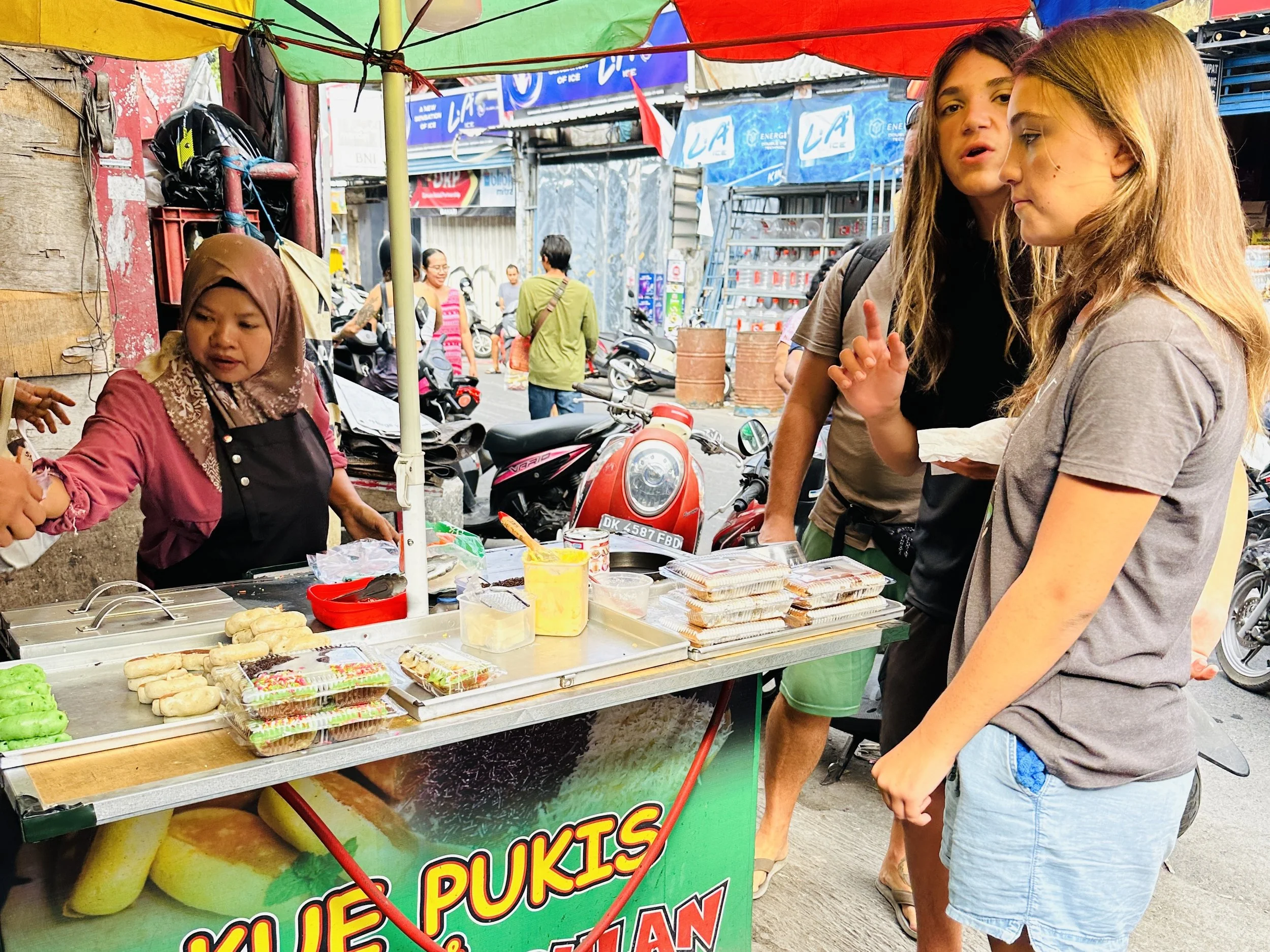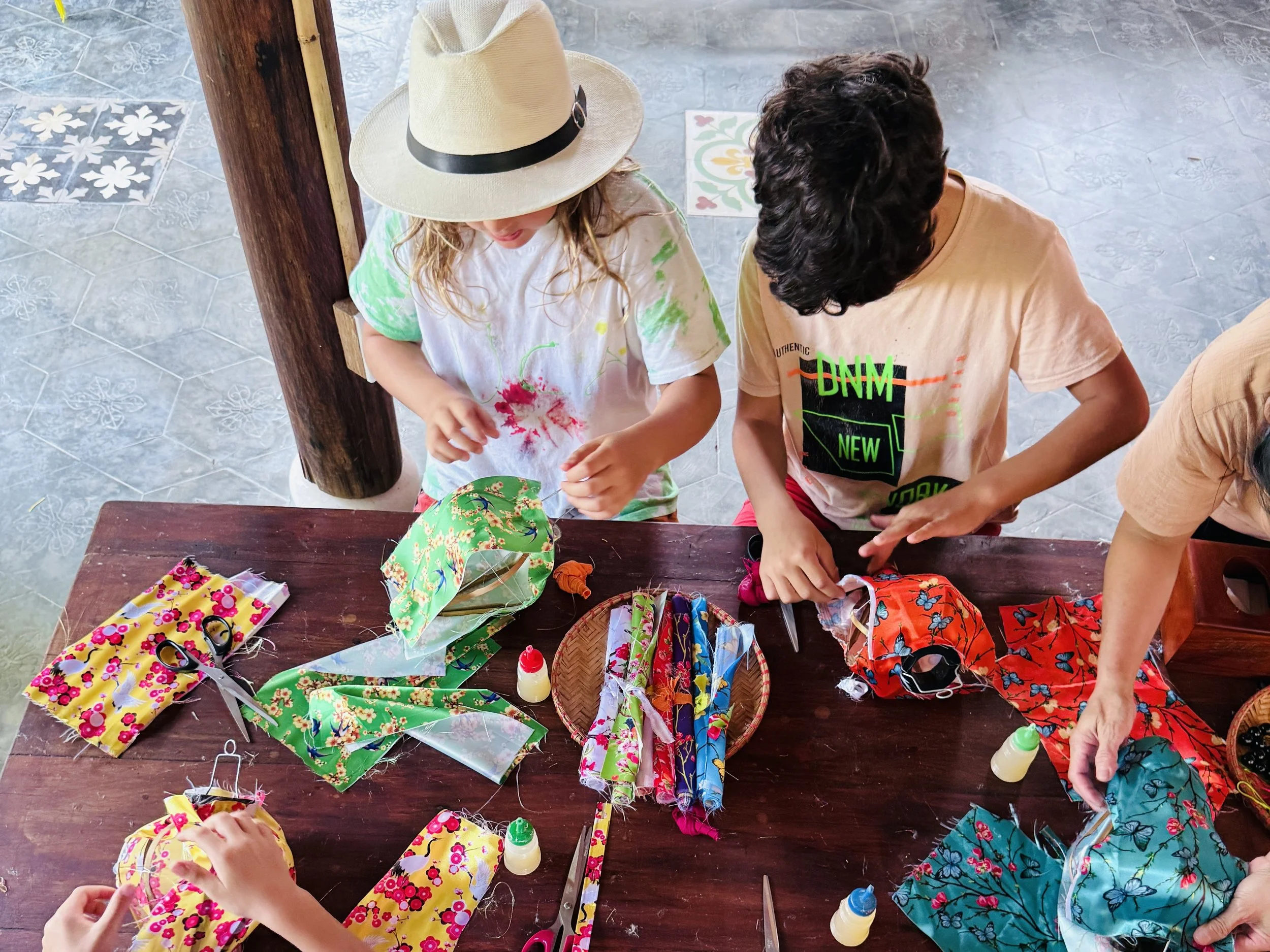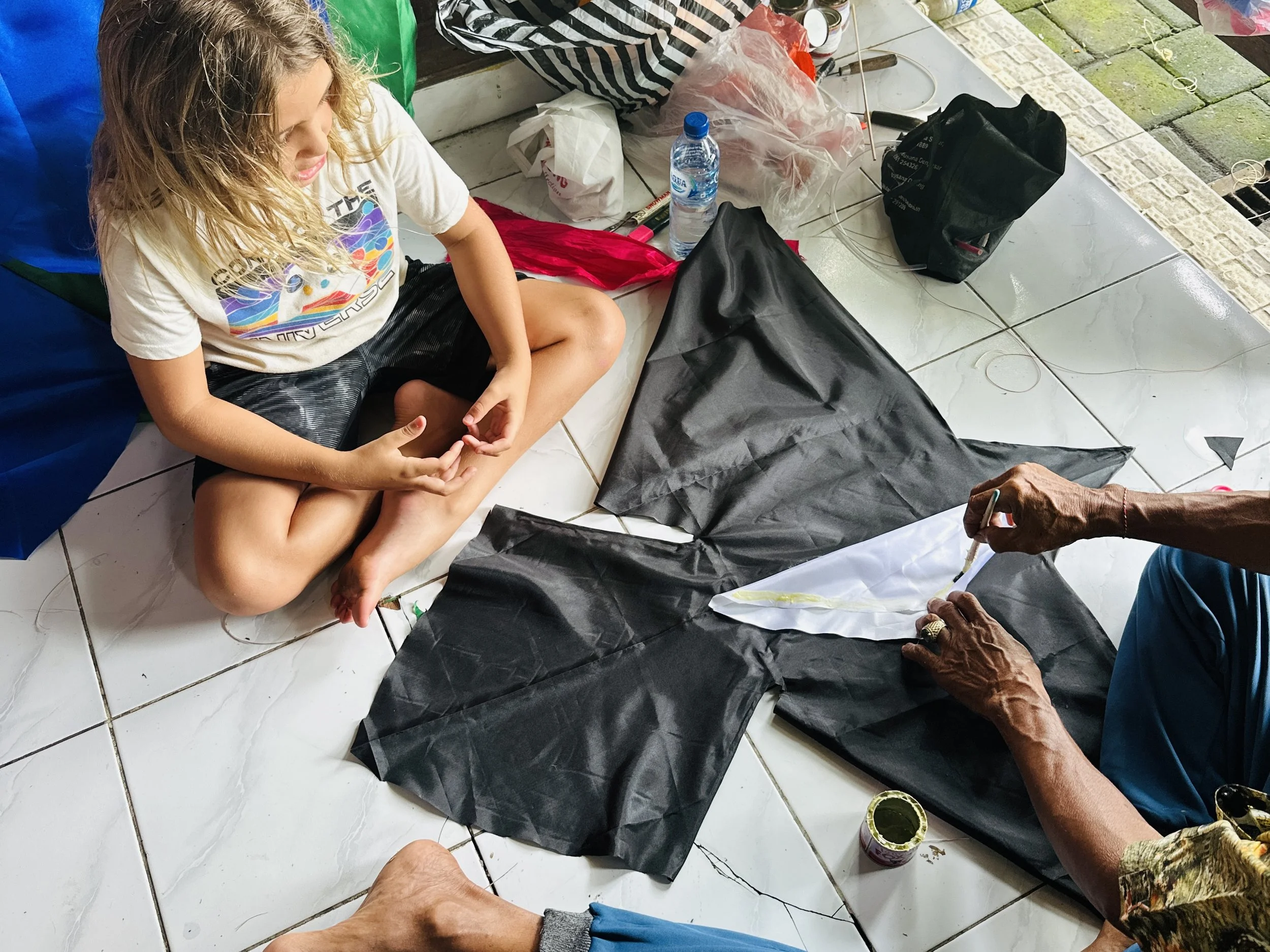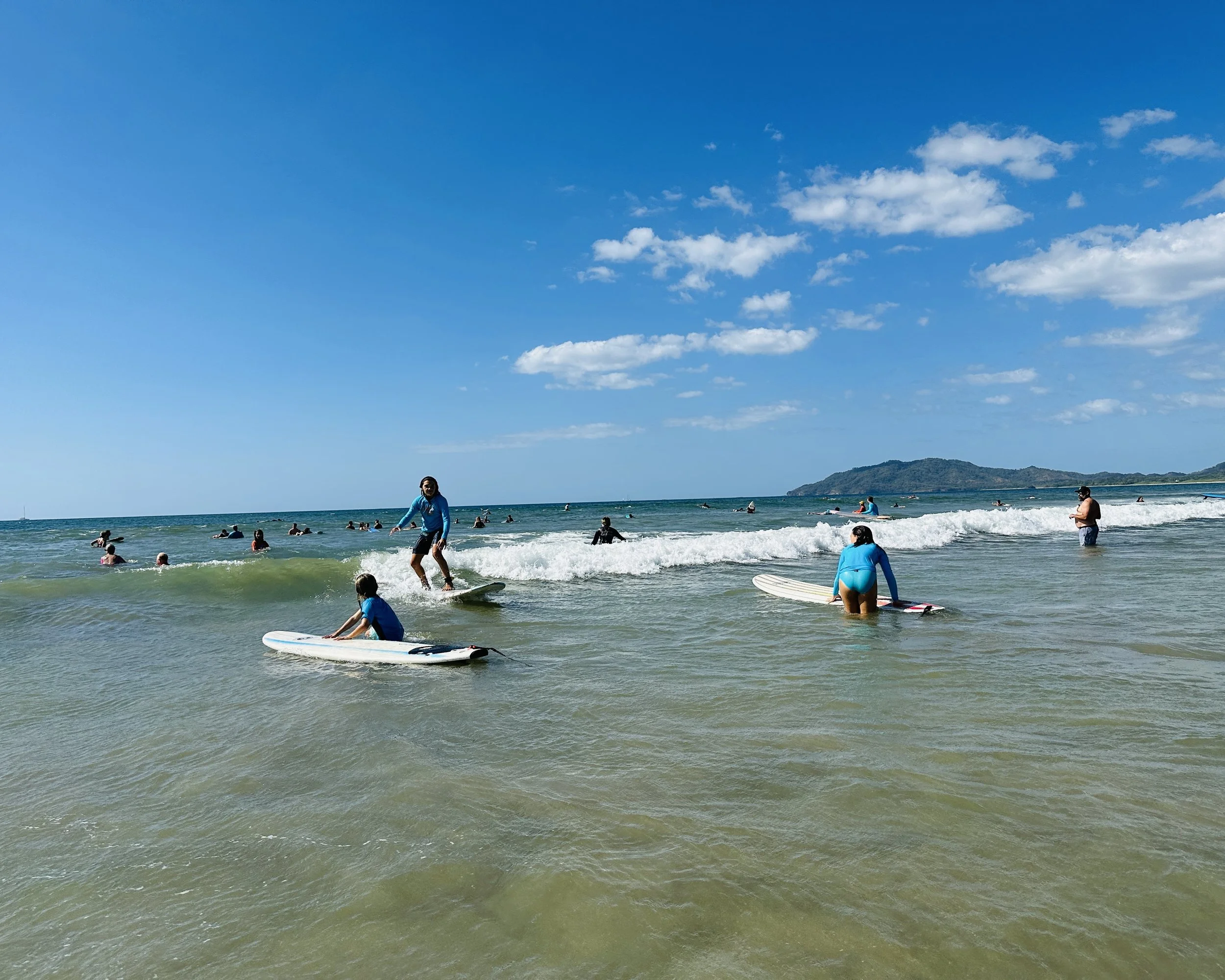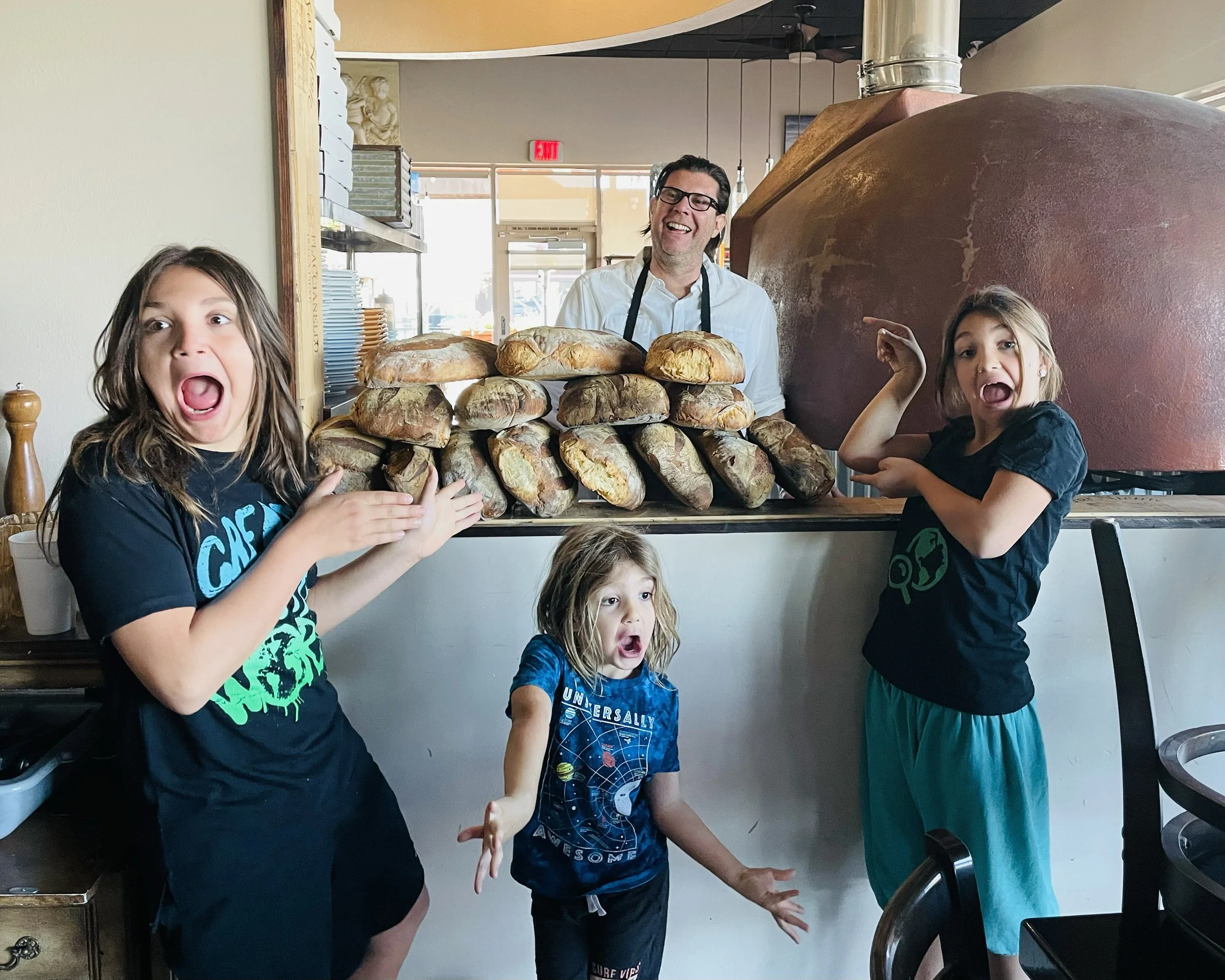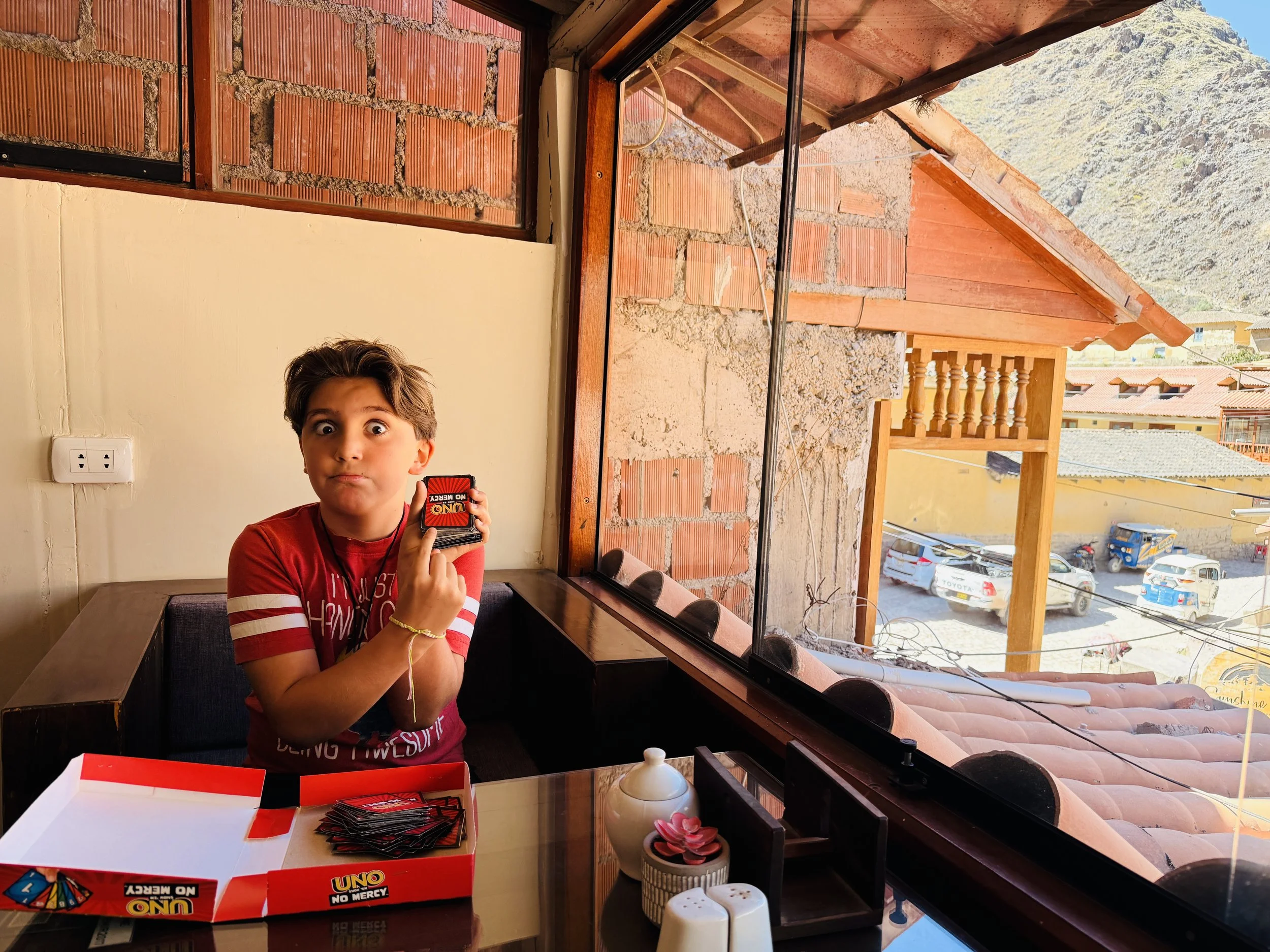✈️ How to Create a Hands-On Travel Itinerary (Especially with Kids)
Travel has always been about discovery: new sights, flavors, and ways of life. But over the years, we’ve realized that the most meaningful moments don’t come from simply seeing a place; they come from doing something within it.
When we first started traveling full-time as a family, our itineraries were packed with must-see landmarks and top-rated attractions. We checked them off one by one, proud of how much we had covered. But something was missing: a sense of connection.
It wasn’t until we slowed down and began engaging with the local culture that travel started to feel truly transformative. When our journeys stopped being about ticking things off a list and instead became about opening ourselves to unexpected opportunities along the way, everything changed.
That’s when we discovered the power of the hands-on travel itinerary: one that turns a trip into an experience and transforms sightseeing into lifelong learning.
In this post, we’ll share how you can create your own hands-on itinerary, especially if you’re traveling with kids. These are the strategies, tools, and mindset shifts that helped us turn our family adventures into immersive, memorable journeys, the kind your children will still talk about years later.
🌍 What Is a Hands-On Travel Itinerary?
A hands-on travel itinerary focuses less on observing and more on participating. It’s about rolling up your sleeves, engaging your senses, and connecting with local people through shared experiences.
Instead of just watching a dance performance, you learn the steps.
Instead of buying handmade pottery, you sit with the artisan and mold the clay yourself.
Instead of walking through a market as a tourist, you cook a meal with ingredients you picked out that morning.
This approach makes every destination come alive, especially for children. Kids naturally learn through play, touch, and participation. When they can do something, they don’t just remember it; they understand it.
A hands-on itinerary might include:
Cooking or craft workshops with locals
Nature-based experiences like farming, animal care, or foraging
Cultural rituals or ceremonies (observed respectfully and sometimes participatory)
Learning activities such as language classes, art, or storytelling
Community engagement, like volunteering or helping at a local school or project
It’s travel that blends learning, connection, and fun, a combination that makes even the smallest experiences unforgettable.
👨👩👧👦 Why Hands-On Travel Works So Well for Families
We often joke that kids are the best travelers because they’re curious by nature. They ask questions adults would never think of, notice tiny details, and dive in without hesitation.
In 2019, we were visiting a winery in South Africa. Cosimo was genuinely curious about how wine was made and insisted on joining the whole tour of the winery. Since Emma and Luca preferred running around the open fields, we decided to split up so everyone could experience the place in their own way.
Throughout the tour, Cosimo stayed right up front, asking one thoughtful question after another. The guide later told us how much he enjoyed having him there because his curiosity made the entire experience more engaging, not just for us, but for all the adults on the tour.
That’s precisely what hands-on travel nurtures: that natural spark of curiosity that makes learning effortless and exciting.
Here’s why it’s such a powerful approach for families:
1. It Keeps Everyone Engaged
Extended museum visits and endless walking tours can test anyone’s patience, especially kids. But give them the chance to knead dough, paint a mask, build a kite, or plant a seed, and suddenly they’re all in.
One of our favorite experiences was a lantern-making workshop in Hoi An, Vietnam. Our kids chose the fabric they liked, glued, and assembled their lanterns. They didn’t just make a souvenir; they learned about the meaning of lanterns in Vietnamese culture, about patience, and about working together as a team.
2. It Turns Learning into Living
Travel is the best classroom, and hands-on experiences make it even richer. Kids learn geography, history, and culture naturally, without worksheets or lectures.
A day spent learning to make coffee in Costa Rica taught our kids about local agriculture, trade, and even the global impact of small farms. They saw the process from bean to cup and, through touch and taste, understood how much effort goes into every sip.
These moments teach lessons that stick, not because they were studied, but because they were lived.
3. It Builds Confidence and Connection
When children learn new skills abroad, they see themselves differently. They realize they can adapt, communicate across cultures, and try new things without fear. That confidence carries over into daily life.
We’ve seen our kids go from shy to self-assured after guiding others in a local art workshop or sharing what they learned about cooking spices in a Thai kitchen. These are the kinds of experiences that help them grow not just as travelers, but as people.
🧭 How We Keep Our Travels Hands-On (Even When We Don’t Plan It)
When you travel full-time, you can’t plan every detail, and honestly, that’s the beauty of it. Some of our best experiences happened because we were open, curious, and willing to say yes in the moment.
Over time, we’ve found a rhythm that keeps our travels naturally hands-on. It’s less about building itineraries and more about cultivating awareness, recognizing meaningful opportunities when they appear.
1. We Follow Curiosity, Not Checklists
Instead of researching everything ahead of time, we let our surroundings and interests guide us.
If we meet a local who mentions a festival, a family craft, or a small business, we follow that lead.
That’s how we ended up learning to make chocolate in Peru, build kites in Indonesia, and make pottery in Nepal.
Hands-on travel isn’t about searching; it’s about noticing what’s right in front of you.
2. We Let the Kids Lead
Our kids’ curiosity is often our compass. When one of them becomes fascinated by something, whether it’s coffee beans, temple bells, or surfboards, we pause and explore it further.
In Costa Rica, for example, our kids asked to take surfing lessons. We booked a house in Tamarindo, an excellent spot for beginners, and dedicated some time to learning surfing there. Their excitement and progress reminded us how much joy comes from letting their interests shape our plans.
When children guide the day, learning happens effortlessly. Those moments often become the most memorable because they’re born from genuine interest, not parental planning.
3. We Look for People, Not Tours
Instead of booking big, packaged experiences, we look for personal connections.
We’ve met artisans, farmers, and cooks who were happy to share their craft simply because we showed interest.
Sometimes all it takes is asking, “Can you show us how you do that?” and suddenly, you’re part of an authentic exchange of culture and kindness.
However, when we do join tours, we prefer small or private groups, which helps our kids feel more engaged and makes the experience far more personal.
4. We Balance Doing with Being
Even hands-on experiences need space to breathe. Some days are full of activity; others are about slowing down, no plans, maybe wandering around, or just talking about what we’ve learned.
If you pack your days too tightly, everything blends, and you miss the chance to absorb each experience truly.
During our trip to Bolivia, for example, we spent three intense days exploring the Salt Flats. Once we returned to La Paz, we took a few days to rest, stroll through the city, and reflect. That’s when the genuine appreciation for those wild days really sank in.
We’ve found that reflection time helps transform experiences into a deeper understanding.
5. We Stay Longer — But You Don’t Have To
One of the most significant gifts of traveling full-time is having the freedom to slow down. The longer we stay in a place, the more life opens up. We stop being visitors and start becoming part of the rhythm.
When you stay for a few weeks or months, neighbors begin to recognize you, shop owners greet you by name, and experiences come to you naturally. You’re not chasing activities, you’re living them.
We’ve been invited to birthday parties, family dinners, and even small village festivals simply because we were around long enough for those connections to form.
But even if you only have a week or two, you can still travel with that same mindset.
Instead of trying to fit in as many destinations as possible, choose fewer and go deeper.
Spend an afternoon in one neighborhood instead of visiting three.
Return to the same café every morning and start a conversation.
You can take part in one local activity that genuinely excites you, not ten that fill the time.
While in Ollantaytambo, Peru, Luca and I were there for only three days, but we always went to the same café to play a board game and order his favorite crepes. By day two, the lady working there greeted us warmly and chatted with Luca every time. We never tried another café because we felt at home there.
Hands-on travel isn’t about how long you stay, it’s about how present you are while you’re there. When you slow down enough to engage, even briefly, you create space for the kind of magic that only happens when you connect
6. We Keep Our Days Flexible
Hands-on travel doesn’t fit into rigid plans.
We leave gaps in our days and weeks so that when something spontaneous arises —a celebration, a class, or an invitation —we can say yes.
Our amazing train ride from Cusco to Lake Titicaca happened only because I hadn’t booked any flight out. Since there was limited availability, I adapted to the one day left, and it turned out to be one of our most memorable journeys!
Flexibility has led us to unforgettable experiences that no itinerary could have predicted.
7. We Treat Every Place Like a Classroom
Whether we’re in a big city or a small village, we try to find what each place can teach us. Sometimes it’s history, sometimes it’s art, sometimes it’s resilience.
The world is full of teachers; they don’t all work in schools.
Learning happens every day in the most unexpected ways. Sometimes it’s something someone says; other times it’s something you notice while walking around.
Learning is always right in front of you; you have to be open enough to recognize it.
💡 Tools and Resources to Help You Plan
Here are a few of our favorite ways to research and organize hands-on travel experiences:
Airbnb Experiences: Great for finding small, authentic workshops led by locals.
GetYourGuide: Ideal for structured family-friendly experiences, often with clear reviews.
Viator & Klook: Useful for comparing prices and options across regions.
Local Tourism Websites: Many smaller towns have event calendars or artisan directories.
Facebook Groups: Search “[destination] with kids,” “local experiences,” or “cultural workshops.”
Google Maps Reviews: Try searching keywords like “workshop,” “class,” or “cultural experience” directly in the map.
And don’t forget, sometimes just walking around and chatting with locals reveals the best surprises.
✨ The Real Meaning of Hands-On Travel
Hands-on travel changes the way you see the world, and yourself. It’s about approaching each day with openness and curiosity.
It reminds us that learning doesn’t only happen in schools or museums, but also in kitchens, workshops, markets, and fields.
For families, it becomes a shared adventure of discovery. You learn together, make mistakes together, and grow together. You see your kids light up when they realize they can connect across language and culture, not through words, but through doing.
When we travel this way, we bring home more than souvenirs.
We bring stories, friendships, skills, and a sense of belonging that stretches across continents.
That’s the beauty of a hands-on itinerary: it transforms travel from something you consume into something you create.
Because when you roll up your sleeves, touch the world with your hands, and open your heart to what unfolds, travel stops being just a journey.
It becomes a way of life. 🌍
Wishing you all Happy travels!
